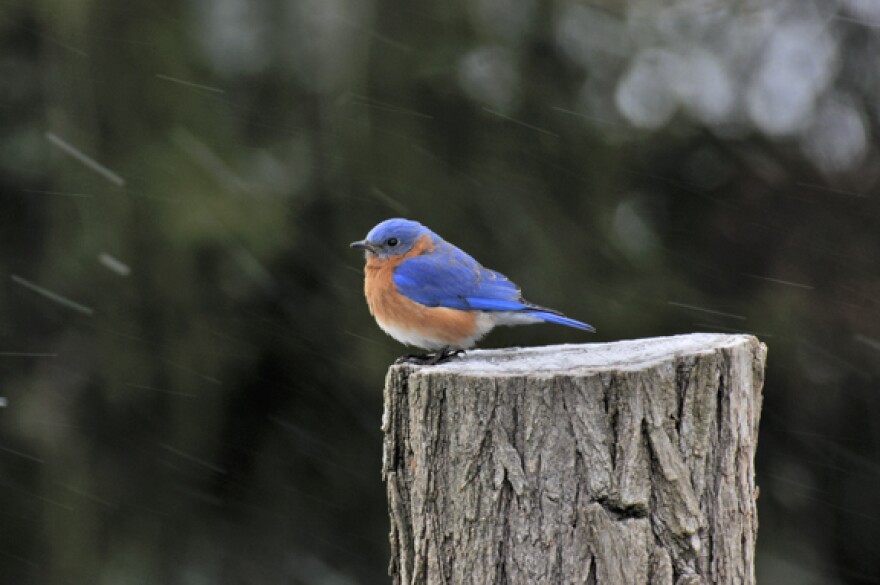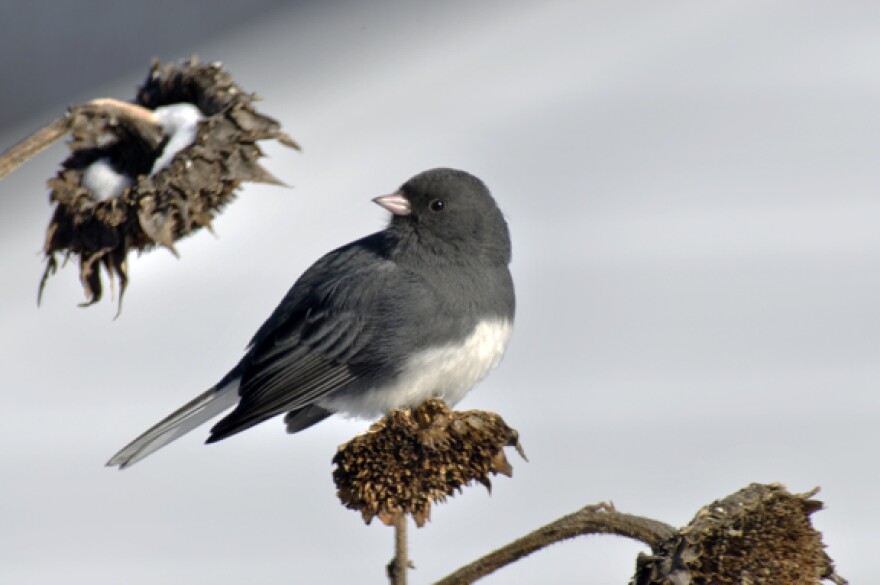The National Audubon Society Christmas Bird Count is, for many people, a holiday tradition. Every year, for a 24 hour period between Dec. 14 and Jan. 5, citizen scientists look to the skies, trees and bird feeders to identify and count as many birds as possible. This year marks the 119th season. West Virginians have been participating for about 80 years.
A Different Tradition
“In West Virginia, we have 20 Christmas bird count circles throughout the state,” Larry Helgerman said. He is the National Audubon Society’s West Virginia state Christmas Bird Count editor. The count began, he explained, in response to another holiday tradition.
“Back in 1899, people would go out at the new year and shoot as many birds and animals as they could. It was a sport,” Helgerman said.
An ornithologist at the time named Frank Chapman thought of a different tradition.
“He came up with the idea of instead of shooting the birds, why don’t we count the birds and make it a conservation thing.”
Christmas Day, 1900, 27 people across the U.S. and Canada counted about 18,000 birds and 90 species. Last year, 77,000 people across more than 2,500 locations participated. According to the Audubon Society, it’s the oldest running citizen scientist survey in the world.
The survey’s West Virginia manager, Larry Helgerman, says he’s looking for more participants — especially in southern regions of the state. The counts are ongoing through the first week of January.
Birding
“It’s a good way to go with somebody who knows more about what’s there,” Jan Runyan said. An educator and regular Christmas bird counter who lives Brooke County, she said the count presents valuable learning opportunities for people just getting into birds.
“It’s not overwhelming, like the spring with all the songs. It’s an entry-level thing that you can do to become a better birder.”
Runyan explained that most experienced birders are really good at identifying the various calls and songs of bird species.
“They do most of their birding, more than 50 percent — some even say 90 percent — by ear. So when you really want to know what’s out there, you need to know what you’re listening to.”
Runyan said it often seems like an impossible task to differentiate between bird calls for newbies. But just as you can close your eyes at a family gathering and know the difference between family members’ voices, she said, you can learn to know the birds.
“You just have to be out there and experience with them,” she said.
Citizen Science
Beatty and Runyan love to be outside, especially during winter months. The walk around their house was very quiet and peaceful. But Beatty said it isn’t always this way.
“This same spot later in the spring is so loud with bird songs because the birds sing songs to defend their territory. That’s what they do the whole time during nesting season,” he said.
Beatty explained that there are different bird surveys throughout the year. In the spring, surveys usually identify varieties of species; but during the Christmas bird counts, people identify species and count as many birds as are seen.
“With a Christmas bird count, we’re trying to determine population,” he explained.
During the Wheeling Christmas count, Runyan pointed out, every year someone focuses solely on American crows, counting a population of 50,000 birds that roost along the Ohio River. The murder of crows has been meeting in the Ohio Valley for years.
Beatty said a lot has changed since he started observing, more than 40 years ago.
“It’s not at all the same today,” he recalled. “I remember going in the woods early on, and we’d have what we call a ‘fall out,’ which means that there would be these birds called warblers migrating, and when they’re hungry, they just fall into a forest. And when you’re in a fallout, they’re just absolutely everywhere.”
“We don’t see it like we used to at all,” he continued, “There’ll be a fallout, but they are much fewer birds.”
Beatty explains the bird population trends gathered during Christmas count are good environmental indicators to warn humans about various dangers. The data is used in many ways. On the Audobon website there are even mapping tools that show how and where populations of various species have changed in the past decade.

























